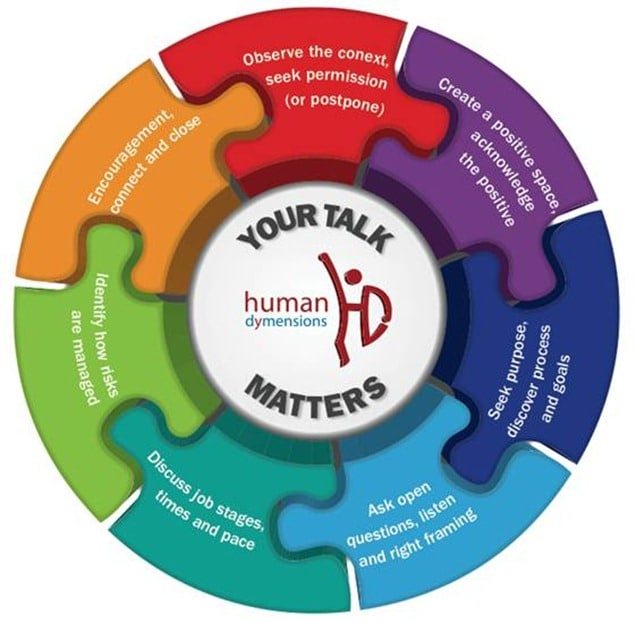In our preoccupation with technology, systems, checklists and legislation I trust we don’t lose sight of the most powerful instrument we have to manage risk – the simple but effective, safety conversation. Now whilst having a conversation is simple, it’s not simplistic. It is however, our greatest tool to help influence others and increase perception. Psychological and cultural beliefs and values are mostly in people’s heads. You can’t learn about values and beliefs without walking around and having an effective conversation.
Research by Weick, Sunstein, Geller and Slovic state that 95% of all accidents and incidents are related to psychological and cultural causes. So after we have completed all the paperwork associated with safety and systems, it’s still down to human judgment and decision making. The evidence for this fact emerges after every accident when people say they are bewildered by what someone did? They sometime express this by stating that someone lacked common sense. Why did Ted stand in the exclusion zone? Why did Bill assume the power had been tagged out? Why did Fred slip into the tank, why didn’t he wear a harness? All these questions which we ask after the event show that our workplaces don’t lack more checklists but lack more skilled conversations.
You can’t see complacency but you can hear it. You can’t see assumptions you can only hear them. You can’t guess comprehension of Safe Work Method Statements you can only hear it. You can’t assume the checklist did its work, you can only hear if it has. The effective conversation is the key to supervision.
Unfortunately, many supervisors are not good at conversation. Most organisations don’t invest the time and resources into training supervisors to be effective conversationalists. It is assumed that an effective conversation and skilled questioning come naturally. In workplaces with a technical focus, engineers and technicians are usually quite poor at effective conversations. It’s not their bread and butter; “soft” skills are generally not a big part of their technical training.
The most important skills to having an effective safety conversation are: pitching, framing, questioning and priming. Without understanding, coaching and practicing these skills, you will have little chance of properly hearing and influencing culture and behavior at work.
Here are some tips to get started on how to have an effective safety conversation.
- If you don’t have a positive attitude, don’t go out. People can sense authoritarian and negative attitudes.
- Check in to your own biases and expectations. If you are carrying some agenda, don’t go out.
- Do you know how to observe for cultural and psychological indicators?
- Observe but don’t spy.
- Listen for attitudes and values in language rather than focus on program and cosmetics.
- Open with a positive statement, notice something good and name it.
- Learn how to tactically ignore. If something is minor ignore it. Don’t be nitpicky.
- Listen to language, especially generalisations and stereotypes.
- Listen for blaming, rushing, distractedness, fatigue, arrogance, overconfidence and know how to soften and reframe dangerous language.
- Be focused on dialogue not “telling”.
- Ask open questions.
- Don’t ask confirmatory or leading questions.
- Don’t ask questions which try to prove your own hypothesis or assumptions.
- Ask questions which help them tell a sequence and story.
- Do you know how to ask creative questions? Questions which are at a tangent to the obvious but tell you what values and beliefs are being held?
- Don’t rave on with your own war stories. Conversations are not about you. Dialogue is two way.
- Consider your pitch. What is going to be your angle?
- How will your dialogue be framed?
- How will your questions and language “prime” the listener? What words and phrases will you avoid? Do you know what words and approach switch people off?
- How will you conclude? Do you know how to be positive and encouraging? Do you know how to avoid pithy meaningless language such as “be careful”? Is your encouragement specific?
A useful tool to get started on an effective safety conversation is the Your Talk Matters Wheel. Seven simple steps to an effective safety conversation.




